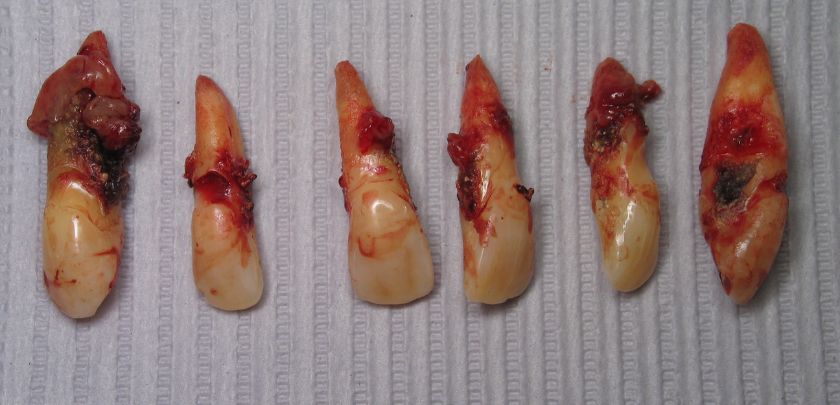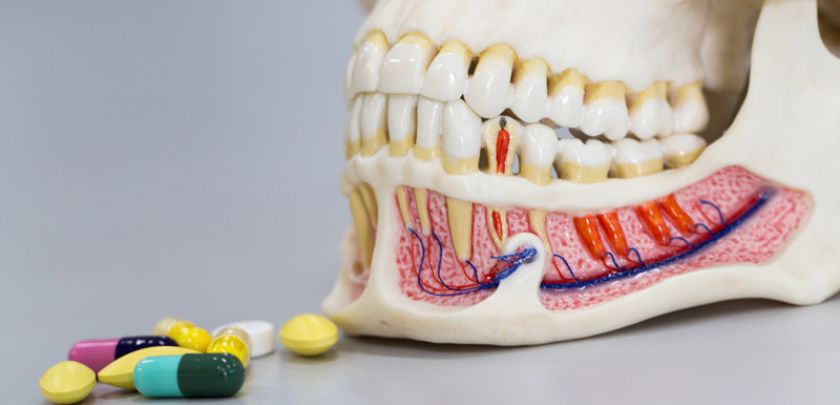$99 New Patient Special - Includes Exam, X-Ray and Basic Cleaning
What Happens To The Abscess After Tooth Extraction?

Dentists commonly perform tooth extraction for various reasons, including tooth decay, infection, or overcrowding. Sometimes, a problematic tooth develops an abscess, a pocket of pus caused by a bacterial infection. An abscess can occur in different areas, such as the tip of the root (periapical abscess) or in the gums beside the tooth root (periodontal abscess). Patients often wonder what happens to the abscess after a tooth extraction. This blog post explores the aftermath of tooth extraction on abscesses. It covers the healing process, potential complications, and ways to ensure a smooth recovery.
Understanding Tooth Abscesses
Before discussing what happens post-extraction, it’s crucial to understand what a tooth abscess is. A tooth abscess is the body’s defensive reaction to infection. When bacteria penetrate the tooth’s pulp, the immune system responds. It sends white blood cells to fight the infection. This battle results in pus formation, a mixture of dead white blood cells, bacteria, dead tissue, and fluid. The pus accumulates in a pocket at the infection site. Abscesses can cause severe pain, swelling, and other systemic symptoms if the infection spreads.
The Extraction Procedure
When a dentist extracts a tooth with an abscess, they remove the tooth and some infected tissue. This procedure helps eliminate a significant portion of the infection. However, if the abscess hasn’t drained adequately, further treatment may be necessary. If the infection has spread beyond the immediate area, additional care might also be needed.
After the Extraction
Immediate Aftercare
Immediately after the extraction, the body begins the healing process. Removing the tooth and draining the abscess can relieve pain caused by pus pressure. A blood clot forms in the socket where the tooth was, which is crucial for healing. It’s important to keep this blood clot undisturbed to prevent complications. If disturbed, you may develop dry socket, a painful condition that can delay healing.
Dealing with the Abscess Post-Extraction
If the abscess is confined to the area around the tooth and drains properly during the extraction, the body will likely heal without further complications. The immune system will continue to fight any residual infection, and removing the tooth eliminates a major source of the infection.
However, if the abscess has begun to spread, you may need additional treatment. This treatment could include antibiotics to help fight the remaining infection. In some cases, further surgical intervention may be necessary to clean out any infected areas that could not be addressed during the initial extraction.
Healing Process
The healing process varies from person to person but generally involves several stages:
- Blood clot formation: Within the first 24 hours, a blood clot forms in the socket, acting as a protective layer over the underlying bone and nerves and supporting the development of new tissue.
- Granulation tissue formation: Over the next few days, the body develops granulation tissue, a type of tissue rich in blood vessels and connective tissue, to cover the wound.
- Bone regeneration: Over the following weeks to months, the bone around the extraction site will regenerate and remodel itself to fill in the space left by the extracted tooth.
Potential Complications
While the extraction of a tooth with an abscess generally leads to the resolution of the infection, complications can occur:
- Dry socket: If the blood clot fails to form or is dislodged, it can expose the underlying bone and nerves, leading to increased pain and a delayed healing process.
- Spread of infection: If the abscess was not fully addressed, the infection could spread to other areas of the mouth or even systemic circulation, leading to more serious health issues.
- Osteomyelitis: In rare cases, the infection can spread to the jawbone, leading to a condition called osteomyelitis, a bone infection that requires aggressive treatment.
Ensuring a Smooth Recovery
To ensure a smooth recovery and minimize the risk of complications, follow these guidelines:
- Follow post-operative instructions: Your dentist or oral surgeon will provide detailed care instructions after the extraction. Following these instructions is crucial for healing.
- Oral hygiene: Maintaining good oral hygiene is essential. Gentle rinsing with salt water can help keep the area clean without disturbing the blood clot.
- Avoid certain activities: Avoid smoking, using a straw, or any sucking actions, as these can dislodge the blood clot.
- Eat soft foods: Stick to soft, nutritious foods that don’t require much chewing and avoid hot beverages.
- Pain management: Use the pain relief methods recommended by your dentist or surgeon, which may include over-the-counter pain relievers or prescribed medications.
The extraction of a tooth with an abscess typically leads to the resolution of the infection, but it is essential to follow proper aftercare instructions to ensure a smooth and speedy recovery. Understanding the healing process and potential complications can help patients navigate their recovery more effectively. Always consult with your dental professional for advice tailored to your specific situation. With proper care, most people recover from tooth extractions without significant issues, leading to a healthier and more comfortable oral environment.







